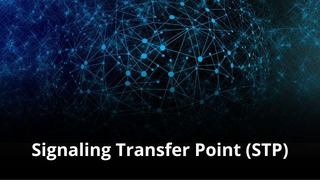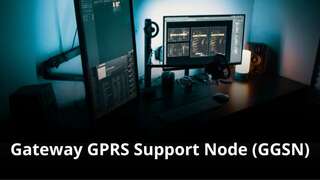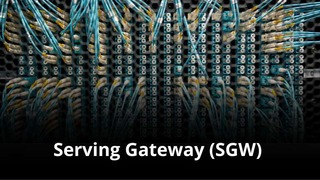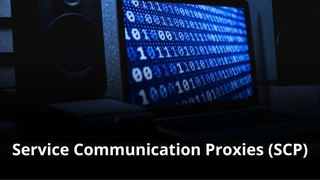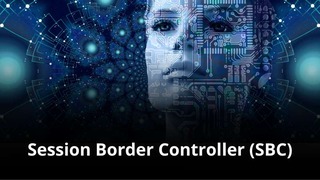Introduction about the Session Border Controller (SBC)
The Session Border Controller (SBC) is a dedicated networking device or software application deployed in Voice over IP (VoIP) and IP Multimedia Subsystem (IMS) networks to manage, control, and secure real-time communication sessions. It acts as a sophisticated firewall and traffic management gateway for voice, video, and messaging traffic across network borders. Understanding the SBC is essential for grasping how service providers and large enterprises deliver secure, high-quality, and reliable IP-based communications.
What are the details of a Session Border Controller (SBC)?
- History and Evolution of the Session Border Controller
- Core Utility and Functionality of the SBC
- Technical Integration and Data Model
- SBC Ownership for MVNOs and IoT Companies
- Organizational Impact of SBC Ownership?
- Redundancy and High Availability
- Future Trends and the SBC
- Frequently Asked Questions about the SBC
- Summary
History and Evolution of the Session Border Controller (SBC)
The need for the Session Border Controller (SBC) arose with the widespread adoption of Voice over IP (VoIP) in the early 2000s. Traditional IP networks, like the internet, were not inherently designed to handle the complexities of real-time communication protocols like Session Initiation Protocol (SIP) and Real-time Transport Protocol (RTP). Issues such as Network Address Translation (NAT) traversal, firewall pinholes, and denial-of-service (DoS) attacks threatened the viability of VoIP. The SBC was developed to solve these security, interworking, and quality problems, evolving from a simple proxy to a highly specialized application-aware gateway essential for modern mobile (IMS) and fixed-line communication services.
Core Utility and Functionality of the SBC
What is the SBC Used For?
The Session Border Controller (SBC) is primarily used to control the flow and integrity of real-time communication sessions (voice, video, and data). It provides the critical border function necessary to bridge different network domains, such as connecting an enterprise’s local network to a carrier’s core network. Deploying an SBC is non-negotiable for service providers to ensure the security, quality, and interworking of their communication services.
Key Functions of the Session Border Controller (SBC)
Lets investigate the core functions of the Session Border Controller (SBC), typically categorized into Security and Service functions:
- Topology Hiding: Conceals the internal network structure (IP addresses, network elements) from external parties.
- NAT/Firewall Traversal: Enables SIP and RTP traffic to pass through network address translators and firewalls.
- Protocol Interworking: Translates between different flavors of SIP (e.g., handling variations in headers or signaling logic).
- Denial-of-Service (DoS) Protection: Throttles traffic and rejects malformed packets to protect internal network elements.
- Encryption/Security: Enforces encryption (TLS for SIP, SRTP for media) and manages security policies for lawful interception.
- Media Transcoding: Converts media codecs (e.g., G.711 to G.729) to allow calls between disparate networks.
- Call Admission Control (CAC): Limits the number of simultaneous calls to prevent network congestion and maintain QoS.
- QoS Enforcement: Marks packets (e.g., using DiffServ and monitors latency to ensure high-quality voice/video.
- Line-Rate Protection: Protects against malicious flooding attempts at the network layer.
Technical Integration and Data Model
Integration with Other Systems
The Session Border Controller (SBC) operates at the network border, connecting the IP-based communications world. Examine its key integration points to appreciate its gatekeeper role.
- Proxies/Call Servers: It interfaces with internal and external SIP proxies, call control servers, or IMS core elements (e.g., P-CSCF or I-CSCF).
- Media Gateways: It interfaces with media components for interworking with the legacy Public Switched Telephone Network (PSTN).
- Firewalls/Routers: It is deployed immediately adjacent to perimeter firewalls and routers, acting as a highly specialized signaling and media forwarder.
- BSS/OSS (Billing/Operations Support Systems): It generates call detail records (CDRs) that feed into the operator’s billing and management systems.

Technical Data Model and Key Interfaces
The SBC maintains a real-time Technical Data Model centered on active sessions. This model includes:
- Session State: Tracks the signaling (SIP) and media (RTP) status for every active call, including call ID, endpoints, and duration.
- Topology Mapping: Stores the mapping between the hidden internal network addresses and the public external addresses visible to the outside world.
- Policy Tables: Contains rulesets for Call Admission Control (CAC), security policies, and interworking profiles for different customer/carrier connections.
SBC Ownership for MVNOs and IoT Companies
Why Own a SBC?
For a Full or Thick Mobile Virtual Network Operator (MVNO) or a large enterprise with its own IP telephony network, owning a dedicated Session Border Controller (SBC) is a fundamental requirement for service delivery. Consider that a full MVNO must offer its own termination points for voice and video traffic. Without an SBC, they would be unable to connect securely and reliably to the public internet or to partner networks, making their core service impossible to monetize.
Advantages and Disadvantages of SBC Ownership
Total Security Control: Complete authority over the firewall and DoS protection for all real-time traffic.
Quality of Service (QoS) Guarantee: Ability to prioritize and guarantee media quality for premium services.
Vendor Interoperability: Freedom to integrate with any partner/carrier regardless of their SIP implementation quirks.
Revenue Assurance: Generating precise, auditable CDRs for billing and reconciliation.
High Initial Investment: Significant cost for specialized hardware and software licensing.
Requires Specialized Expertise: Need for highly skilled engineers proficient in SIP, RTP, and security protocols.
Complexity in Configuration: Managing vast configuration tables for different tenants, policies, and call flows.
Scalability Challenges: Must be continuously monitored and upgraded to handle peak traffic volumes without dropping calls.
Organizational Impact of SBC Ownership
Analyzing the organizational impact of owning a Session Border Controller (SBC) across various business units.
Operational Impact: Requires the establishment of a dedicated Voice/IP Operations team responsible for 24/7 monitoring of call quality metrics (e.g., Mean Opinion Score – MOS, latency, jitter). Implement rigorous change management for interworking and security profiles.
Finannial Impact: Evaluate the high capital expenditure (CapEx) for the device itself, coupled with the ongoing operational expense (OpEx) for specialized vendor support and software upgrades required to keep pace with evolving SIP standards and security threats.
Commercial Impact: Leverage the SBC’s capabilities to enable the launch of new, high-value services such as high-definition video conferencing, secure VoLTE/VoWiFi roaming, and unified communications (UC) bundles, offering differentiation in the market.
Technical Impact: Mandates a deep integration into the IP core network, often requiring collaboration between networking and application development teams to ensure consistent end-to-end policy enforcement.
Redundancy and High Availability

Given that the Session Border Controller (SBC) sits in the direct path of all revenue-generating voice/video traffic, Redundancy and High Availability (HA) are absolutely critical. Implement an active/standby or active/active N+N clustered architecture, often utilizing geographic separation. This setup must ensure that the standby unit can take over the entire call state instantly without dropping any active calls (a capability known as stateful failover. Ensure that the deployment includes robust load balancing and health checks to seamlessly direct traffic to the available SBC nodes.
Impact of 5G and 6G on the SMSC
The Cloud and Virtualization
The modern SBC has rapidly transitioned from a proprietary hardware appliance to a Virtualized Network Function (VNF) or a Cloud-Native Function (CNF) running on commodity servers or in public/private clouds. This virtualization allows for greater scalability, elasticity (scaling up and down on demand), and lower capital costs.
5G and IMS
In the 5G core, the SBC remains an essential border element for the IP Multimedia Subsystem (IMS). It continues to secure and manage all SIP signaling and RTP media for VoLTE and VoWiFi traffic as it enters and exits the operator’s private network (the IMS domain), particularly at the boundary with other carriers or the internet. Its functions are considered an enduring necessity for the security and interworking of real-time IP communication.
Frequently Asked Questions about the Session Border Controller (SBC)
1. What is the single most important function of an SBC?
The most critical function is Security. The SBC acts as the last line of defense, protecting the internal voice network from attacks like Denial-of-Service (DoS) and preventing unauthorized access by concealing the network’s internal topology.
2. How is an SBC different from a standard firewall?
A standard firewall is session-unaware for real-time traffic and typically only looks at IP addresses and ports. An SBC is application-aware (specifically for SIP/RTP). It reads the SIP signaling messages and dynamically opens pinholes for the associated media streams (RTP) and performs deep inspection to ensure the signaling is valid.
3. What does "NAT Traversal" mean in the context of an SBC?
NAT Traversal is the process by which the SBC allows voice and video traffic to pass through Network Address Translators (NATs) and firewalls. The SBC does this by inspecting the SIP message headers and rewriting the private IP addresses found within them to their corresponding public IP addresses, enabling devices behind a NAT to communicate globally.
4. Is an SBC needed for both fixed-line VoIP and mobile VoLTE/VoWiFi services?
Yes. For fixed-line VoIP, it secures the perimeter connecting to outside carriers. In mobile networks, it is a key component of the IP Multimedia Subsystem (IMS) core (often called the Interrogating-CSCF or Inter-working-CSCF) where it secures and manages all VoLTE and VoWiFi traffic connecting to other service provider domains.
5. What is the significance of "Topology Hiding"?
Topology Hiding means the SBC ensures that the internal private IP addresses, domain names, and technical details of the operator’s core network elements are never revealed to the external network. This makes it extremely difficult for external parties to map or attack the core infrastructure.
Summary
The Session Border Controller (SBC) is the essential application-aware gateway for all real-time IP communication, providing security, quality assurance, and interworking across network borders. Owning an SBC is a core necessity for MVNOs and large enterprises to guarantee the reliable, high-quality, and secure delivery of voice and video services. This critical component demands significant investment in specialized expertise and redundant infrastructure but grants the essential control over the communication service layer.



